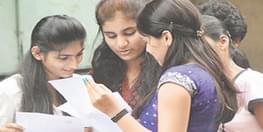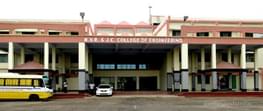Dr. Umakanta Nanda is a distinguished academician in the field of Electronics Engineering. He has received the MTech and PhD degrees in Electronics and Communication Engineering from the National Institute of Technology, Rourkela, India in 2010 and 2017 respectively. He is currently working as an Associate Professor and Dean of the School of Electronics Engineering at VIT-AP University, India. He has more than 15 years of teaching and research experience in different educational institutions. He has guided more than 20 UG and PG student projects. 5 PhD scholars have received their Doctorate degree and another 4 scholars are working under him in areas like Analog and Mixed-signal integrated circuits, beyond CMOS devices and circuits, application-specific processor design, and embedded systems design. He has published more than 90 research papers including reputed SCI and SCOPUS indexed journals, conference proceedings, and book chapters. He is also co-inventor of 6 patents which have been published. He has successfully conducted many workshops, FDPs, STTPs, seminars, value-added courses, training programs, and conferences. He has also worked as a reviewer and editor of numerous journals and conferences.

You have worked in other prestigious organizations throughout your career. What excited you to walk with VIT AP on the journey?
I have been observing the growth of VIT since more than a decade and also it is well known to most of the people. Moreover, South India especially Andhra Pradesh is well known for higher education. When the management of VIT started a new campus (VIT-AP) near to the city of Vijayawada that is more or less at the center of Andhra Pradesh, I thought to be a part of it and contribute my experience for the growth of VIT-AP.
How do you balance the needs of faculty, students, and administration as a Dean of Electronics Engineering
Every stake holder wants the holistic growth of the institute and it is possible only if all faculty members contribute their effort towards teaching-learning, research, innovation and entrepreneurship development of the students. As a Dean of School of Electronics Engineering my job is to help the faculty and students to bring their talent outside through which the development can be faster. Of course this won’t be possible without the support of the higher administration. We are always thankful to them because of their continues support and encouragement towards the overall growth of the students and faculty members of the institute.
As a Dean, of the School of Electronics Engineering what is the USP or the differentiating factors that make VIT AP University stand out from other colleges?
Research and innovation of VIT-AP makes it stand at the top. Within a short span of 6 years, VIT-AP has grown it’s research exponentially. It is also known for it’s capability of product development through the incubation centers. Students of VIT-AP take part in an unique credit based course called as Engineering Clinics in their first year of study itself. Here they are given a chance to build a team consisting of students from different programs and will work in a multi-disciplinary environment to build their own hardware prototype which will be helpful to overcome the problems related to social, environmental and industrial needs.
Also, in VIT-AP, through Design Your Own Degree (DYOD), we have given full freedom to the students to choose their courses, faculty, slots etc. by consulting with their mentors and program chairs so that they will get a chance to learn their required courses.
As the dynamics of technology are changing rapidly, How do make sure that you are current with the latest trends and developments in the field of Electronics Engineering and incorporate them into the curriculum and programs offered by VIT AP University?
We always emphasize the over and above curriculum needs. Hence the students are always encouraged for taking the Value Added Courses designed by aiming to the needs of industries. Other than this, the curriculum also has industry certifications, summer internships, MOOC courses and final year industry internships through which the students can fulfill their credit requirements.
Check VIT University Scholarship
How well is VIT AP focusing on maintaining industry relationships with companies in order to leverage them for live projects, training, and placements for electronics students?
VIT-AP has collaborations and signed MoUs with many industries including leading industries like INTEL, ST Microelectronics, TCS, IDS-Block chain, Boston IT solutions and many more through which live projects, training, and placements are possible for Electronics students.
What measures would you take to ensure that VIT AP University provides a conducive learning environment with state-of-the-art facilities and infrastructure?
VIT-AP has a first-rate infrastructure to meet the demands of its pupils in the academic and extracurricular areas. Modern infrastructure on the site guarantees a favorable study environment. The classrooms at VIT-AP are specious and well-stocked with contemporary teaching tools, giving students a relaxing and engaging learning environment. Students can get practical knowledge and firsthand experience in their various professions through the state of the art laboratories and modern equipment.
The library and digital library offer a large selection of books, periodicals, and online resources to meet the various academic demands of students and faculty. These sources are useful tools for self-study and research.
How would you promote experiential learning and practical application of knowledge within the School of Electronics Engineering?
The tag line of VIT-AP is “Apply Knowledge and Improve Life” and it is well reflected through our experiential learning too. Most of our syllabus consists of laboratory experiments related to the theory that is being taught to the students. Hence students get the hands on experience of the same course in the labs.
What steps is VIT AP University taking to bridge the gap between academia and the real industry world?
BOS committee comprises of industry personnel and while building the syllabus their inputs are always taken so that the gap between the academia and the real industry world can be reduced. Industry guest lectures are being arranged so often so that students will have the flavor of the industry while learning in the institute itself. Electronics students are given chance to go for industry visits.

![VIT University - [VIT- AP]](https://image-static.collegedunia.com/public/college_data/images/logos/1615969516Screenshot20210317134244.png?h=71.7&w=71.7&mode=stretch)
.png?h=132&w=263&mode=stretch)




.png?h=78&w=78&mode=stretch)


![K L University - [KLU]](https://image-static.collegedunia.com/public/college_data/images/appImage/25362_hm.png?h=111.44&w=263&mode=stretch)





![KKR & KSR Institute of Technology and Sciences - [KITS]](https://image-static.collegedunia.com/public/college_data/images/appImage/28565_app imagegf.png?h=111.44&w=263&mode=stretch)



![Vignan's Lara Institute of Technology & Science - [VLITS]](https://image-static.collegedunia.com/public/college_data/images/appImage/24602_0.jpg?h=111.44&w=263&mode=stretch)












![VIT Business School - [VITBS]](https://image-static.collegedunia.com/public/college_data/images/logos/159775539949755996101568568649397877221633486954692608n.png?h=72&w=72&mode=stretch)
![Vellore Institute of Technology - [VIT] Chennai](https://image-static.collegedunia.com/public/college_data/images/logos/1520330799lgoedt1.png?h=72&w=72&mode=stretch)

![Vellore Institute of Technology - [VIT University]](https://image-static.collegedunia.com/public/college_data/images/logos/1604923303Logo.jpg?h=72&w=72&mode=stretch)
![VIT-AP School of Business - [VSB]](https://image-static.collegedunia.com/public/college_data/images/logos/1526558086Untitled.png?h=72&w=72&mode=stretch)
![VIT-AP School of Law - [VSL]](https://image-static.collegedunia.com/public/college_data/images/logos/1610949484Screenshot20210118110830.png?h=72&w=72&mode=stretch)
.png?h=72&w=72&mode=stretch)





.png?h=72&w=72&mode=stretch)
.png?h=72&w=72&mode=stretch)


![G. Pulla Reddy Engineering College - [GPREC]](https://image-static.collegedunia.com/public/college_data/images/logos/1408946419L_408.gif?h=72&w=72&mode=stretch)
![Andhra University, College of Engineering - [AUCE]](https://image-static.collegedunia.com/public/college_data/images/logos/1756446694Header.png?h=72&w=72&mode=stretch)
![GMR Institute of Technology - [GMRIT]](https://image-static.collegedunia.com/public/college_data/images/logos/1479966276logo.png?h=72&w=72&mode=stretch)
![Prasad V. Potluri Siddhartha Institute of Technology - [PVPSIT]](https://image-static.collegedunia.com/public/college_data/images/logos/1738573649logocollege.png?h=72&w=72&mode=stretch)

![Mohan Babu University - [MBU]](https://image-static.collegedunia.com/public/college_data/images/logos/1650533803logo200.png?h=72&w=72&mode=stretch)

![Vishnu Institute of Technology - [VIT]](https://image-static.collegedunia.com/public/college_data/images/logos/1480310942logo.png?h=72&w=72&mode=stretch)

![Sagi Ramakrishnam Raju Engineering College - [SRKR ]](https://image-static.collegedunia.com/public/college_data/images/logos/1697801139logo1.png?h=72&w=72&mode=stretch)

![Vignan's Lara Institute of Technology & Science - [VLITS]](https://image-static.collegedunia.com/public/college_data/images/logos/148007244355.jpg?h=72&w=72&mode=stretch)



![Anil Neerukonda Institute of Technology & Sciences - [ANITS]](https://image-static.collegedunia.com/public/college_data/images/logos/1591266477Logo.jpg?h=72&w=72&mode=stretch)

Comments